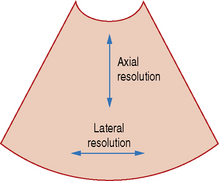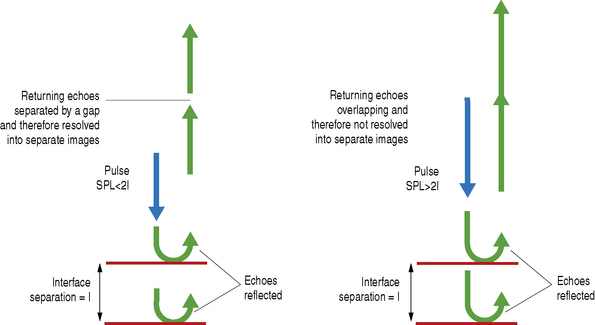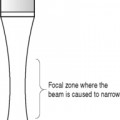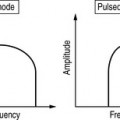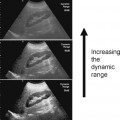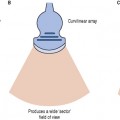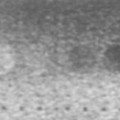Chapter 7 Resolution
Resolution is a term which describes the ability of an imaging system to differentiate between structures, images, or events and display them as separate entities.
SPATIAL RESOLUTION
This is the ability to display two structures situated close together as separate images. When the structures are displayed as separate images we say that they are resolved (see Fig. 7.1).
In ultrasound imaging, spatial resolution is divided into two components:
Axial Resolution
This is resolution along the axis of the beam and depends upon the spatial pulse length – a short pulse length gives good axial resolution and the best resolution that can be achieved is half the spatial pulse length. For example if the pulse length is 1 mm then structures situated along the axis, which are less than 0.5 mm apart, will not be resolved (see Figs 7.3 and 7.4).
Factors affecting spatial pulse length and therefore axial resolution
Frequency Each pulse of ultrasound is approximately two wavelengths long and therefore a shorter wavelength will reduce the pulse length. The wavelength of ultrasound depends on its frequency with the higher frequency waves having the shorter wavelengths. Therefore using ultrasound with a higher frequency for imaging will result in a shorter spatial pulse length and improved axial resolution.
Stay updated, free articles. Join our Telegram channel

Full access? Get Clinical Tree



